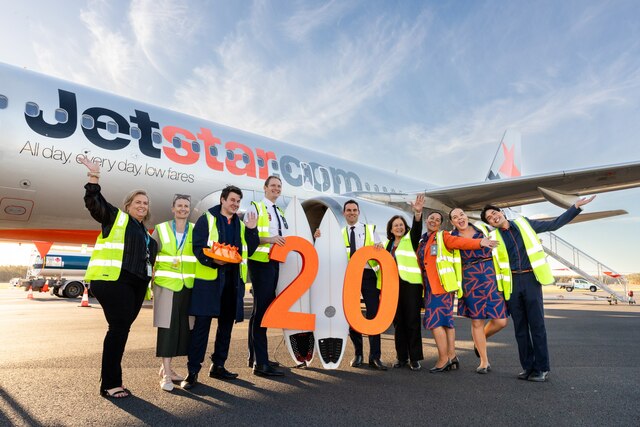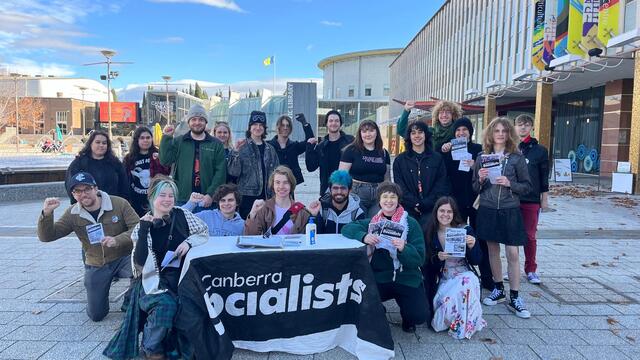The City of Stirling is Western Australia’s largest local government with a booming population of over 187,000 and an annual budget in excess of $192 million.
The City of Stirling is embarking on a once in a generation era of growth and transformation, with several bold projects planned for the local community.
Stirling City Centre – Developing Perth’s Second CBD
The City of Stirling, in partnership with the Western Australian Planning Commission (WAPC) is currently working on the $16 billion redevelopment of Stirling City Centre. Initiated in September 2006, this major project aims to create a sustainable, vibrant and diverse “heart” for the City.
Stirling City Centre will be one of the largest projects of its kind in Western Australian history. It is estimated that it will attract approximately $16 billion in investment into the area over the next 10 to 15 years, providing significant local employment and homes for approximately 25,000 people.
The City’s vision for this project is a multifunctional and vibrant community hub, with a wide range of cohesive commercial, residential, civic and open space areas, incorporating built form that is architecturally interesting and reinforcing the pedestrian nature of the area.
The preferred movement network for Stirling City Centre is based on a transport hierarchy that prioritises public transport, walking and cycling modes over private vehicles for local movements and trips made over longer distances within the district area.
As part of the project, a Stirling City Centre Alliance was formed in July 2008 between the City of Stirling, WAPC, Main Roads, Public Transport Authority and LandCorp.
The Stirling Alliance recently made a formal submission to Infrastructure Australia (IA), for funding consideration on the planning phase of Stirling City Centre. The key
basis of the submission was that the Stirling Alliance is a new way of approaching complex City Centre development issues.
The Stirling Alliance is currently carrying out an extensive community and stakeholder engagement program, to ensure project outcomes accurately represent the views and values of all stakeholders and to assist in the development of the Stirling City Centre Structure Plan and Implementation Strategy. Stakeholder Reference Group meetings are held fortnightly, providing a discussion forum for all potential ideas. To date, the Alliance has also hosted two Community Open Days and two industry workshops, where attendees had the opportunity to view concept plans and contribute to the development of Stirling City Centre.
Smart Response to Climate Change
The City of Stirling has a network of approximately 50 major sports reserves and over 400 other parks and public open spaces. To continue providing first-class amenities to its residents while being sustainability focused and conscious of its impact on the environment, the City recently launched its Water Smart Parks Strategy, aimed at increased efficiency in watering practices.
The City has worked collaboratively with the Department of Water in the development of this strategy, which will reduce the amount of groundwater used on the City’s parks and reserves by close to 20 per cent, to ensure the City is operating within the Department of Water’s annual water usage allocation – currently at 7,500 kilolitres per hectare.
Water Smart Parks will ensure the City is able to maintain high quality lawn on all active playing surfaces, even under drought conditions. With the introduction of hydrozones, the strategy will see different water application rates applied to various parts of a park dependant on use. The reliance on irrigation will be reduced for passive-recreation areas, through the replacement of some lawn areas with waterwise and local native plants, referred to as ecozoning.
The City of Stirling operates arguably the largest irrigation asset in Western
Australia, if not Australia, and it is hoped that other local governments will follow Stirling’s lead, with regard to appropriate and efficient watering techniques.
The Water Smart Parks Strategy is the first stage of the City’s broader Groundwater Conservation Strategy that will address the needs of our changing climate and future availability of groundwater, while reducing the City’s water usage and delivering cost savings in maintenance.
In another water conservation initiative, the City was the first local government in Western Australia to pilot soil moisture sensors, with funding from the Community Water Grant provided by the Australian Government Water Fund.
The sensors measure soil moisture levels and determine when to irrigate, how much water to apply and the depth of wetting. They also determine patterns of
soil moisture extraction by roots and trends in soil moisture content over time. The information is then relayed to the computerised irrigation management system in real time, instantly adjusting the irrigation watering cycles.
The pilot project has been extremely successful and the City is now in the planning stage of expanding the use of this innovative technology across other reserves throughout the City.
City of Stirling Irrigation Statistics
- Water use allocation 5,207,625 kilolitres per year
- City-wide irrigated area 672 hectares
- Number of reticulated reserves 296
- Number of irrigation bore pumps 356
- Number of sprinklers 65,000
- Number of solenoid valves 6,625
- Number of Irrigation Maintenance Officers 12
Aiming High with One Million Trees
The City of Stirling has also commenced its Million Trees Initiative, which aims to plant one million trees within City of Stirling boundaries by 2020. An additional 38,000 plants per annum are set to be planted as part of the initiative, taking the total to 80,000 planted by the City each year.
The Million Trees Initiative will enable the City to adequately respond to climate change, assist with carbon sequestration, increase green-links and biodiversity corridors across the City, improve urban landscape aesthetics and reduce “urban heat island” effects.
The Million Trees Initiative will see Stirling collaborate with Main Roads WA, to identify landscaping opportunities in median strips and assist with increasing vegetation cover, improve the visual image and ambience of the City and provide wildlife movement corridors.
Environmental issues were ranked as one of the highest priorities to residents in the
City’s annual tracking survey. The Million Trees Initiative acknowledges the views of the community and aligns with a number of the City’s other sustainability-focused projects, such as the Carbon Neutral vehicle fleet program and the Groundwater Conservation Strategy.
Women in Waste
The City of Stirling has 11 women who work in the traditionally male-dominated Waste Services workforce. These women occupy a range of positions including truck drivers for domestic waste recycling, weighbridge operators at the Recycling Centre Balcatta, beach and public toilet cleaning, bin control duties, auxiliary services and administration roles.
Waste Services at the City is highly rated in terms of performance and operational management and the City is particularly impressed with the achievements these women have made since being in these roles.
City of Stirling residents are often surprised, yet supportive, to see a lady sitting high in the cab behind the wheel of a truck and have received much support, particularly from females pleased to see a woman performing a role that challenges the traditional, stereotypical work roles for women.
The women, affectionately referred to as “Women in Waste” within the City, experience a number of benefits including job satisfaction, a friendly working environment, the capacity to drive a variety of vehicles, increased fitness levels and training, such as first aid courses.
Waste Management is a service critical to the environment and wellbeing of the community and the City encourages both males and females to join this expanding industry. With the City predicting another prosperous year ahead, career opportunities at Stirling are at an all-time high.
Serving Our Community
The City of Stirling provides highly successful Meals on Wheels service to aged and disabled residents.
Meals on Wheels has been operating at the City of Stirling for over 31 years and earlier this year celebrated the delivery of its six-millionth meal, a momentous occasion in the service’s history.
Meals on Wheels provides over 610 freshly cooked, two-course meals daily or approximately 130,000 meals per annum, which cater for various dietary requirements and are often the main source of nutrition for many clients.
The service is funded under the Home and Community Care (HACC) program and utilises the Cook Chill method to prepare meals, which ensures freshness and is considered to be more nutritious than frozen meals.
In addition to catering for the needs of City of Stirling residents, the service also provides meals for the Town of Bassendean, Shire of Mundaring and a number of City of Swan residents. It is the biggest Meals on Wheels operation in Western Australia and one of the largest in Australia. This service has also been awarded Hazard Analysis Critical Control Point certification, an internationally recognised food safety and handling program.
Through the Meals on Wheels service, the City aims to help residents, who are unable to prepare their own nutritious meals, maintain their independence, reduce the need for nursing home care and provide reassurance, as volunteers are trained to identify any health or social support needs during a meal delivery.







